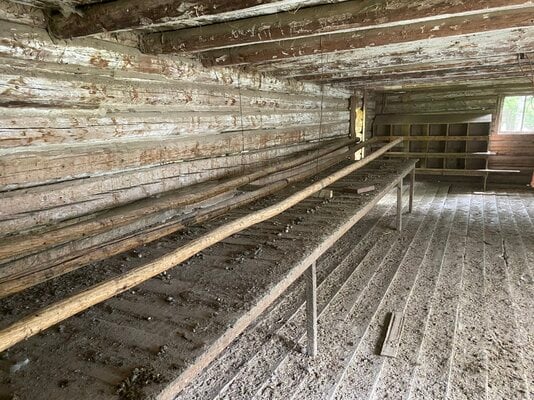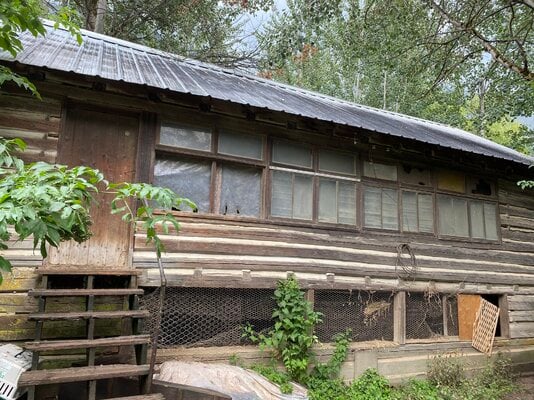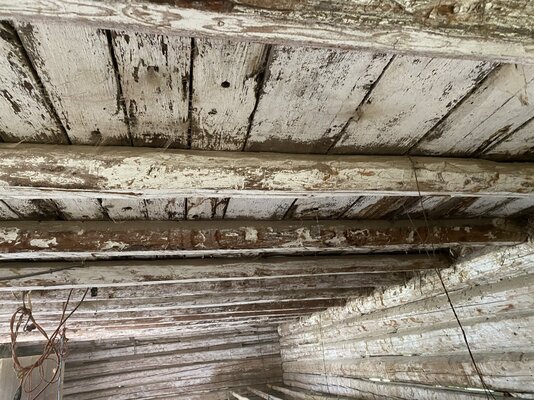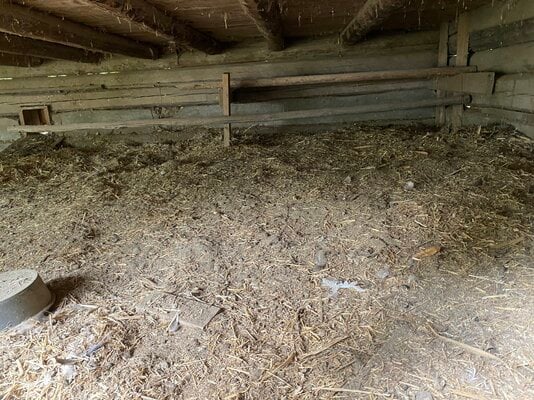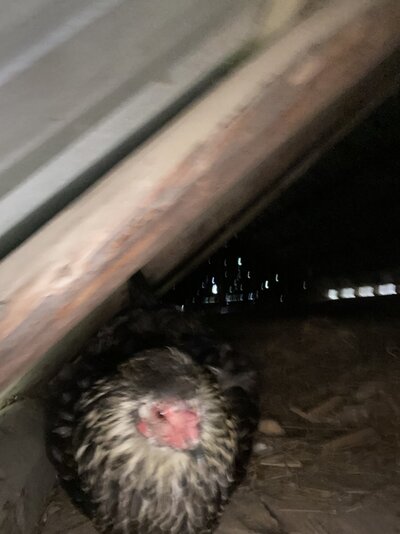cricketbug63
In the Brooder
- May 31, 2020
- 2
- 3
- 11
Hi all!
I’m a long time lurker, and I know there are lots of similar posts but I haven’t seen any that *quite* match my situation. Please bear with me if I give too much information!
I recently had a young chick pass away. She’s not the first to die, it happens once in a while, but I’d brought her in because we noticed she was limping and lagging behind her momma. I checked for injuries, gave vitamins, splinted the leg and ultimately held her while she passed away. Then I noticed she was absolutely swarming with tiny grey bugs (they literally didn’t come off her til she died and then it was a mass exodus of them!). Poor baby!! I also noticed that my Roos have really red skin on their legs, and then hens aren’t really laying much. Their poops range from light brown to brown and white, not frothy. A couple have dark purple edges to their combs but none are pale anymore. They get oyster shell, pellets, scratch, cracked corn, chick starter, and have free range of the whole property (they use about 3 acres of it) and enjoy foraging. We do have wild turkeys that literally nothing can deter.
I know I’ve got mites or lice for sure. Alright. So now to clean the coop!
Except. I live on a farm built in the 30’s, and the chicken coop is a 400sqft log structure. The attic is insulated with old straw, and the ceiling boards are fragile enough that I can’t get up there to clean it out. The main floor of the structure is made of old boards, strong and sturdy but there are small gaps between them so you can see down into the lower level. There is a trap door /walkway down into the basement of the coop, but we have it covered to avoid predators coming up through the basement. The windows are mostly covered with plastic, but have the ability to open, and have a gap in the bottom, and then the chinking between logs is gapped enough that there’s quite a lot of air getting through—excellent ventilation, but it’s pretty warm in the winter.
How do I kill mites and lice in an ancient wood structure, with an attic with straw insulation, a floor that is too gappy to hold a diatomaceous earth powder, with a dirt floor below? Also, we have several feral barn cats that come and go that I don’t want to poison with permethrin (though I did buy some), and our neighbour has honeybees maybe half an acre from the coop.
I’d love some advice—this is what ive gleaned from similar posts, but with cats on property and the fact there are so many places I won’t be able to reach while cleaning, I’m open to suggestions!!
My thought was: scrape out the coop, wait til everyone roosts at night, go out with ivermectin to put drops under the wings of all the adults (there’s about 30 adult chickens, 20 juveniles, 10 young chicks, 6 geese and a pretty haggard looking Muscovy hen in the coop. I do not keep food or water inside the coop). After treating everyone, put them all in the stall in the barn for the night. The next day, take a pressure washer to the floor, nest boxes, roosts and walls of the coop, then spray… permethrin? The closest I have access to is Boss pour on (5%). Would that work, diluted to .5% like dr. Doom and sprayed with a sprayer into all the cracks and corners? I can get doctor doom or another spray, but it’s expensive and not going to go far with all the nooks and crannies I need to spray it in. I was also considering ordering some Elector PSP so that I don’t have to do a follow up treatment in 10 days as it’s impossible to get it everywhere, but, living in Canada, I can only get partial containers through eBay.
I figured I’d spread diatomaceous earth and wood ash from our stove in the nest boxes, around the roosts, and in the dirt below the coop. Move a kiddie pool of the DE/ash mixture into the coop for dust bathing, and then use… I don’t know—pine pellets? Wood shavings? Straw? What’s the best bedding to discourage a resurgence? Keep in mind it’s a large space and the gaps are too wide to hold DE/ash on the floor, beyond a little sprinkling.
A couple weeks from now I figured I’d deworm everyone just to be sure. We’ve got babies that I’d like to give away soon and I’d rather not give an infestation along with them.
Thoughts?
I’m a long time lurker, and I know there are lots of similar posts but I haven’t seen any that *quite* match my situation. Please bear with me if I give too much information!
I recently had a young chick pass away. She’s not the first to die, it happens once in a while, but I’d brought her in because we noticed she was limping and lagging behind her momma. I checked for injuries, gave vitamins, splinted the leg and ultimately held her while she passed away. Then I noticed she was absolutely swarming with tiny grey bugs (they literally didn’t come off her til she died and then it was a mass exodus of them!). Poor baby!! I also noticed that my Roos have really red skin on their legs, and then hens aren’t really laying much. Their poops range from light brown to brown and white, not frothy. A couple have dark purple edges to their combs but none are pale anymore. They get oyster shell, pellets, scratch, cracked corn, chick starter, and have free range of the whole property (they use about 3 acres of it) and enjoy foraging. We do have wild turkeys that literally nothing can deter.
I know I’ve got mites or lice for sure. Alright. So now to clean the coop!
Except. I live on a farm built in the 30’s, and the chicken coop is a 400sqft log structure. The attic is insulated with old straw, and the ceiling boards are fragile enough that I can’t get up there to clean it out. The main floor of the structure is made of old boards, strong and sturdy but there are small gaps between them so you can see down into the lower level. There is a trap door /walkway down into the basement of the coop, but we have it covered to avoid predators coming up through the basement. The windows are mostly covered with plastic, but have the ability to open, and have a gap in the bottom, and then the chinking between logs is gapped enough that there’s quite a lot of air getting through—excellent ventilation, but it’s pretty warm in the winter.
How do I kill mites and lice in an ancient wood structure, with an attic with straw insulation, a floor that is too gappy to hold a diatomaceous earth powder, with a dirt floor below? Also, we have several feral barn cats that come and go that I don’t want to poison with permethrin (though I did buy some), and our neighbour has honeybees maybe half an acre from the coop.
I’d love some advice—this is what ive gleaned from similar posts, but with cats on property and the fact there are so many places I won’t be able to reach while cleaning, I’m open to suggestions!!
My thought was: scrape out the coop, wait til everyone roosts at night, go out with ivermectin to put drops under the wings of all the adults (there’s about 30 adult chickens, 20 juveniles, 10 young chicks, 6 geese and a pretty haggard looking Muscovy hen in the coop. I do not keep food or water inside the coop). After treating everyone, put them all in the stall in the barn for the night. The next day, take a pressure washer to the floor, nest boxes, roosts and walls of the coop, then spray… permethrin? The closest I have access to is Boss pour on (5%). Would that work, diluted to .5% like dr. Doom and sprayed with a sprayer into all the cracks and corners? I can get doctor doom or another spray, but it’s expensive and not going to go far with all the nooks and crannies I need to spray it in. I was also considering ordering some Elector PSP so that I don’t have to do a follow up treatment in 10 days as it’s impossible to get it everywhere, but, living in Canada, I can only get partial containers through eBay.
I figured I’d spread diatomaceous earth and wood ash from our stove in the nest boxes, around the roosts, and in the dirt below the coop. Move a kiddie pool of the DE/ash mixture into the coop for dust bathing, and then use… I don’t know—pine pellets? Wood shavings? Straw? What’s the best bedding to discourage a resurgence? Keep in mind it’s a large space and the gaps are too wide to hold DE/ash on the floor, beyond a little sprinkling.
A couple weeks from now I figured I’d deworm everyone just to be sure. We’ve got babies that I’d like to give away soon and I’d rather not give an infestation along with them.
Thoughts?





